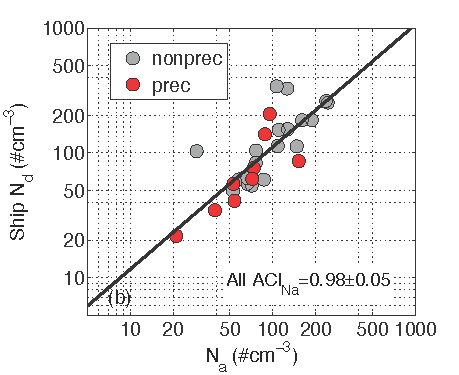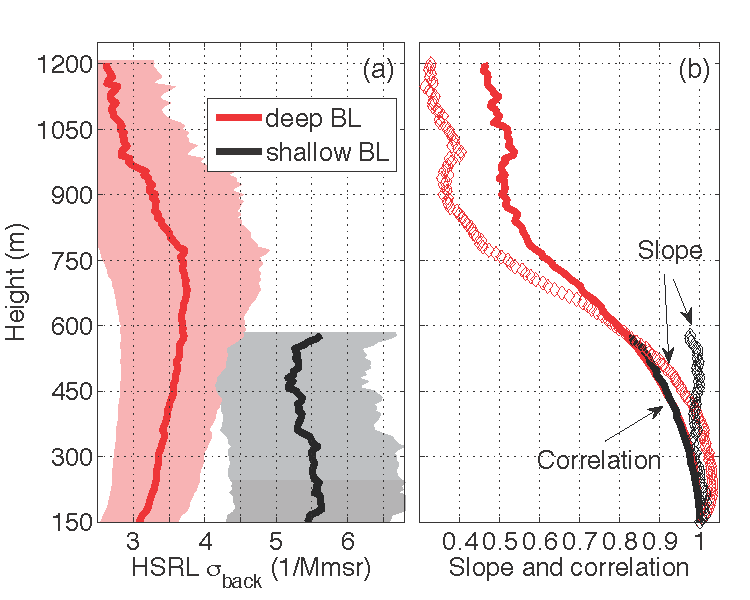Aerosol and cloud co-variability in the northeast Pacific estimated with MAGIC observations
Submitter:
Painemal, David — NASA LaRC /AMA
Area of research:
Cloud-Aerosol-Precipitation Interactions
Journal Reference:
Science
The impact of atmospheric aerosols on climate through their ability to modify subtropical marine low clouds remains a central uncertainty in climate models, hampering accurate quantification of anthropogenic radiative forcing. Thus, uncertainty reduction requires reliable measurements of cloud and aerosol properties that can guide future model improvements. However, long-term observations over marine environments have been elusive until a recent ARM field campaign over the Northeast Pacific: The Marine ARM Investigation of Clouds (MAGIC) campaign. MAGIC deployed the second ARM mobile facility (AMF2) on board a cargo ship, the Horizon Spirit, that sailed between the ports of Los Angeles, California (33.7˚N, 118.2˚W) and Honolulu, Hawaii (21.3˚N, 157.8˚W) for nearly 20 round trips during two observation periods: September (2012)-January (2013) and May-September of 2013, for a total of nearly 200 days at sea. The AMF, which contained three radars, lidars, microwave radiometers, and a suite of other instruments that measured properties of clouds and precipitation, aerosols, and radiation, and meteorological and oceanographic conditions, provided an unprecedented data set that can be used to validate and constrain climate models and satellite retrievals.
Impact
In this study, the unique MAGIC data set was used to quantify the co-variability between aerosol concentration and estimates of cloud droplet number concentration. We show that by synergistically exploiting the strengths of several remote sensors, uncertainties in the quantification of the aerosol indirect effect can be greatly reduced. The study also points to the importance of sampling the aerosol vertical structure, especially when the near-surface measurements are not representative of those right below the cloud base.
Summary
We used remotely sensed MAGIC observations of cloud properties to compute cloud droplet number concentration (Nd) and quantify its co-variability with near-surface measurements of cloud condensation nuclei (CCN) and aerosol properties. We found that Nd, CCN, and aerosol concentrations (for particles larger than 0.1 mm in diameter) are highly correlated, with more polluted samples being associated with higher number of droplets (first illustration), under relatively well-coupled boundary-layer conditions. In addition, the slope of the aerosol-Nd relationship is high and similar to aircraft-based studies, suggesting strong interactions between aerosols and cloud microphysics. In contrast, other ground-based deployments show a weaker and more scattered aerosol-cloud relationship. To understand this discrepancy, we used the aerosol backscatter cross-section from a high-spectral-resolution lidar (HSRL) as an aerosol proxy, and investigated its vertical structure. We found that in shallow and well-coupled boundary layers, aerosols tend to be vertically homogenous with height, whereas deeper boundary layers feature a more complex aerosol vertical structure. In addition, for shallow boundary layers, aerosol measurements at different vertical levels yield high temporal correlations with those near the surface. The weaker temporal correlation between near-surface and 600-1200 m aerosols for deep boundary layers indicates that surface measurements do not fully represent the aerosol variability near the cloud base (second illustration), demonstrating that knowledge of the aerosol vertical structure is essential for accurate quantification of the aerosol indirect effect.



